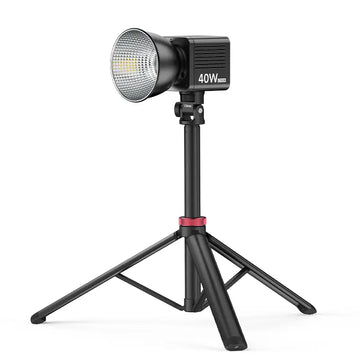Setting up a photography or videography studio involves numerous decisions, one of the most critical being the selection of the right light stand. The right light stand can significantly impact the quality of your work, providing stability, flexibility, and ease of use. This guide will help you navigate the various factors to consider when choosing the perfect light stand for your studio setup.

Understanding Your Studio Needs
Before diving into the specifics of light stands, it's essential to understand your studio's unique requirements. Are you working in a small space or a large studio? Do you need portability for on-location shoots, or will your setup remain stationary? Answering these questions will help you determine the type of light stand that best suits your needs.
Types of Light Stands
Light stands come in various types, each designed for specific purposes. Here are some common types to consider:
- Standard Light Stands: These are the most common and versatile stands, suitable for most studio setups. They offer a good balance of height, stability, and portability.
- C-stands (Century Stands): Known for their durability and stability, C-stands are ideal for heavy-duty lighting equipment. They are often used in professional studios and on film sets.
- Boom Stands: These stands come with an extendable arm, allowing you to position lights overhead or at unique angles. They are perfect for achieving creative lighting effects.
- Tabletop Stands: For smaller setups or product photography, tabletop stands provide a compact and convenient solution.
Key Features to Consider
When selecting a light stand, several features should be taken into account to ensure it meets your studio's demands:
- Height and Adjustability: Consider the maximum and minimum height of the stand. Adjustable stands offer greater flexibility, allowing you to achieve various lighting angles.
- Weight Capacity: Ensure the stand can support the weight of your lighting equipment. Overloading a stand can lead to instability and potential damage.
- Material and Build Quality: Light stands are typically made from aluminum or steel. Aluminum stands are lightweight and portable, while steel stands offer greater durability and stability.
- Portability: If you frequently move your setup, consider a stand that is easy to transport and set up. Foldable and lightweight stands are ideal for on-the-go photographers.
- Footprint and Stability: The base of the stand should provide adequate stability to prevent tipping. Wider footprints and rubberized feet can enhance stability on various surfaces.
Budget Considerations
While it's tempting to opt for the cheapest option, investing in a quality light stand can save you money in the long run. A sturdy, well-built stand will last longer and provide better performance. However, it's essential to balance your budget with your needs. Consider the features that are most important to you and allocate your budget accordingly.
Conclusion
Choosing the right light stand for your studio setup is a crucial step in creating a professional and efficient workspace. By understanding your studio's needs, exploring different types of stands, and considering key features, you can make an informed decision that enhances your lighting capabilities. Remember, a well-chosen light stand not only supports your equipment but also elevates the quality of your work. Happy shooting!








